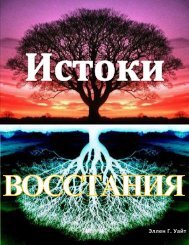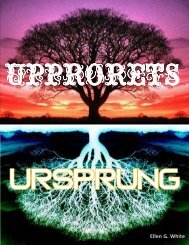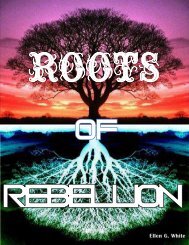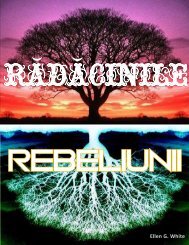Foxe - The Book of Martyrs
The mystery of history is not completely dark, since it is a veil which only partially conceals the creative activity and spiritual forces and the operation of spiritual laws. It is commonplace to say that the blood of the martyrs is the seed of the Church yet what we are asserting is simply that individual acts of spiritual decision bear social fruit …For the great cultural changes and historic revolutions that decide the fate of nations or the character of an age is the cumulative result of a number of spiritual decisions … the faith and insight, or the refusal and blindness, of individuals. No one can put his finger on the ultimate spiritual act that tilts the balance, and makes the external order of society assume a new form… Persecution, powerless to destroy or even to shake this new community, made it only the more sensible of its own strength, and pressed it into a more compact body.
The mystery of history is not completely dark, since it is a veil which only partially conceals the creative activity and spiritual forces and the operation of spiritual laws. It is commonplace to say that the blood of the martyrs is the seed of the Church yet what we are asserting is simply that individual acts of spiritual decision bear social fruit …For the great cultural changes and historic revolutions that decide the fate of nations or the character of an age is the cumulative result of a number of spiritual decisions … the faith and insight, or the refusal and blindness, of individuals. No one can put his finger on the ultimate spiritual act that tilts the balance, and makes the external order of society assume a new form… Persecution, powerless to destroy or even to shake this new community, made it only the more sensible of its own strength, and pressed it into a more compact body.
Create successful ePaper yourself
Turn your PDF publications into a flip-book with our unique Google optimized e-Paper software.
<strong>Foxe</strong>’s <strong>Book</strong> <strong>of</strong> <strong>Martyrs</strong><br />
youth <strong>of</strong> the other were respected, being exposed to all manner <strong>of</strong> punishments and tortures.<br />
Being strengthened by Blandina, he persevered unto death; and she, after enduring all the<br />
torments heret<strong>of</strong>ore mentioned, was at length slain with the sword.<br />
When the Christians, upon these occasions, received martyrdom, they were ornamented,<br />
and crowned with garlands <strong>of</strong> flowers; for which they, in heaven, received eternal crowns <strong>of</strong><br />
glory.<br />
It has been said that the lives <strong>of</strong> the early Christians consisted <strong>of</strong> "persecution above<br />
ground and prayer below ground." <strong>The</strong>ir lives are expressed by the Coliseum and the<br />
catacombs. Beneath Rome are the excavations which we call the catacombs, whivch were at<br />
once temples and tombs. <strong>The</strong> early Church <strong>of</strong> Rome might well be called the Church <strong>of</strong> the<br />
Catacombs. <strong>The</strong>re are some sixty catacombs near Rome, in which some six hundred miles <strong>of</strong><br />
galleries have been traced, and these are not all. <strong>The</strong>se galleries are about eight feet high and<br />
from three to five feet wide, containing on either side several rows <strong>of</strong> long, low, horizontal<br />
recesses, one above another like berths in a ship. In these the dead bodies were placed and the<br />
front closed, either by a single marble slab or several great tiles laid in mortar. On these slabs<br />
or tiles, epitaphs or symbols are graved or painted. Both pagans and Christians buried their<br />
dead in these catacombs. When the Christian graves have been opened the skeletons tell their<br />
own terrible tale. Heads are found severed from the body, ribs and shoulder blades are broken,<br />
bones are <strong>of</strong>ten calcined from fire. But despite the awful story <strong>of</strong> persecution that we may<br />
read here, the inscriptions breathe forth peace and joy and triumph. Here are a few:<br />
"Here lies Marcia, put to rest in a dream <strong>of</strong> peace." "Lawrence to his sweetest son, borne<br />
away <strong>of</strong> angels." "Victorious in peace and in Christ."<br />
"Being called away, he went in peace."<br />
Remember when reading these inscriptions the story the skeletons tell <strong>of</strong> persecution, <strong>of</strong><br />
torture, and <strong>of</strong> fire. But the full force <strong>of</strong> these epitaphs is seen when we contrast them with<br />
the pagan epitaphs, such as:<br />
"Live for the present hour, since we are sure <strong>of</strong> nothing else."<br />
"I lift my hands against the gods who took me away at the age <strong>of</strong> twenty though I had<br />
done no harm." "Once I was not. Now I am not. I know nothing about it, and it is no<br />
concern <strong>of</strong> mine."<br />
"Traveler, curse me not as you pass, for I am in darkness and cannot answer."<br />
<strong>The</strong> most frequent Christian symbols on the walls <strong>of</strong> the catacombs, are, the good shepherd<br />
with the lamb on his shoulder, a ship under full sail, harps, anchors, crowns, vines, and above<br />
15


















